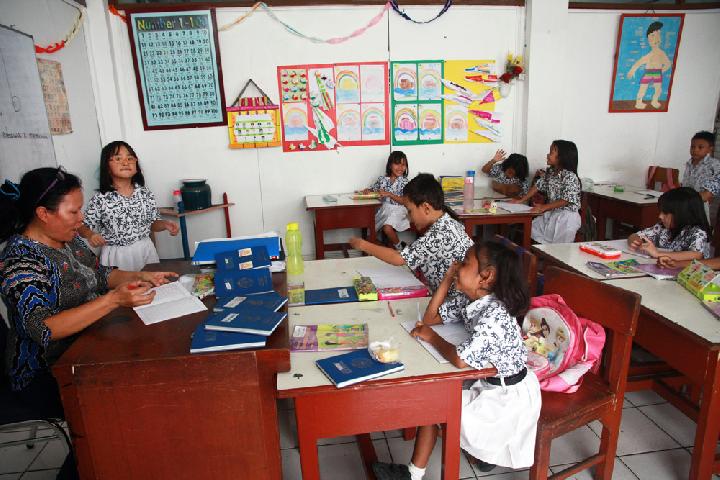Tomorrow Starts Today: Education and the Future of Mobility in Southeast Asia
Translator
Editor
31 January 2024 21:23 WIB

By: Sounghan Lim, Hyundai Future Mobility Teacher
When I got into the profession of teaching, I knew I was changing the world for the better. Whatever knowledge I am imparting to my students, I am reassured that this would be my inheritance for a brighter future. Climate change is an issue close to my heart and will define the lives of generations to come, so I try to influence my students to start making small changes to their lifestyle and even inspire them to become pioneers in sustainability technology. Mobility and transportation, among others, are key sectors where we could make big leaps.
That was why, when I was called up to a teaching program aimed at introducing the wonderful world of future mobility to schools in Southeast Asia, I jumped at the opportunity. I had participated in a similar program once in my country South Korea, and I knew firsthand how impactful the program could be.
New Mobility Urgently Needed in Southeast Asia
During my visit to Bandung, West Java, Indonesia, where I was stationed, I noticed something different from my home country. When I looked up, the sun and the clouds that would greet me every day were hidden behind a layer of translucent, sometimes even opaque substance of some kind. “That’s not fog,” read a tagline on a T-shirt I saw skimming through online news on pollution, which a local helpfully translated into English when I asked. It was in fact smog, and back home in South Korea, it was only something you saw in the most heavily industrial districts of Seoul.
Shared stories with my teaching colleagues – all 23 of us, in 12 schools in Indonesia, Malaysia, and Cambodia – led us to understand that the rapidly developing Southeast Asian nations are facing a collective pollution problem, caused by a multitude of factors including transport, industry, and domestic activities. The massive congestion and long hours spent in traffic, however, point to mobility being one of the main culprits; indeed, road transport alone contributes to a total of 89% of transport-related emissions in the ASEAN region.Business-as-usual no longer cuts it; new, innovative ideas have to be put forward.
Education Paves the Way Forward for Future Mobility Heroes
All these new, innovative ideas have to start somewhere. As an educator, I firmly believe that the starting point is always education; essentially, how we can equip our succeeding generations with both vision and skill. One day, some of them might just become future leaders, inventors, engineers, and scientists, all playing their part to revolutionize the mobility and transport sector.
As part of the Future Mobility School program, I was charged with teaching elementary school students. These classes were tailor-made for them to spark their creativity while also challenging the limits of their imagination – it is crucial for their age group, after all.
Their first task was to mold a futuristic vehicle out of clay based on their imagination. Looking as an adult, it was somewhat wholesome to witness and listen to them explain their more eccentric creations: a car entirely powered using solar panels, a flying car that would take them to America and Europe, and even a car that could dive into the depths of the ocean or drill to the center of the earth. And yet, some of their predictions like the electric vehicle or the self-driving car were amazingly spot-on, mirroring real world developments in mobility.
However, it was during the third and final task that the children faced initial difficulties and took more time than before. I asked them to imagine what a futuristic city – or at least their city in the future – would look like. Most of them blanked for the first ten minutes or so, finding it unexpectedly harder than dreaming up the craziest version of a car they could think of.
Seeing their difficulty, I prompted them to think of a problem that already exists here and imagine what their ideal city would look like without it.
This seemed to have gotten them working. When time was up, nearly all of them came up with some variation of “my city has no pollution” or “my city has no congestion,” or even both. These are real issues children are facing, even though we adults often overlook how it impacts them, mistakenly thinking that we are the ones getting sick from pollution or being stuck in traffic for hours while our children live carefree lives. It is their problem as much as ours. Afterwards, we learned together how the world of new mobility can help them move towards the futuristic city of their dreams and increase overall quality of life.
When class had concluded, a student came up to me and said they wanted to be a car designer in the future. I was surprised and pleased at the same time, considering this was not a common career aspiration among children. Evidently, as we are fast heading towards the world of future mobility, we need to get many more young, bright minds to take charge of tomorrow – theirs, and ours.
The teaching program in which I proudly participated was called the Future Mobility School. Jointly held by Hyundai Motor Company in collaboration with the UNESCO, APCEIU, and the South Korean Ministry of Education, this program targets elementary, junior high, and senior high school students and has been expanded to Southeast Asia countries for the first time this year.
The Future Mobility School that we did was a noble thing and an all-around win for our tomorrow. Seeing these schools all over Southeast Asia, we were happy to bring them a new curriculum and inspire children to make their mark in the mobility sector. Moreover, as ASEAN aims for net-zero emissions by 2050, I hope what we did could open up the path towards that goal and also open up new career paths for them, especially in the mobility industry.
All in all, they taught me as many valuable lessons as I taught them. I am privileged to have been part of this opportunity and look forward to embarking on similar adventures in the future. I can’t wait to bring the Future Mobility School program and hear from more children from all parts of the world.
*) DISCLAIMER
Articles published in the “Your Views & Stories” section of en.tempo.co website are personal opinions written by third parties, and cannot be related or attributed to en.tempo.co’s official stance.























